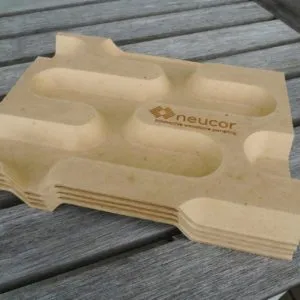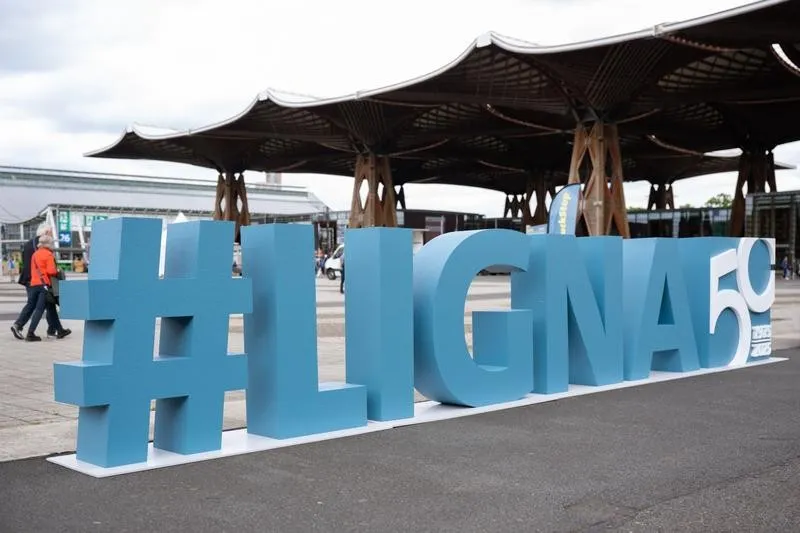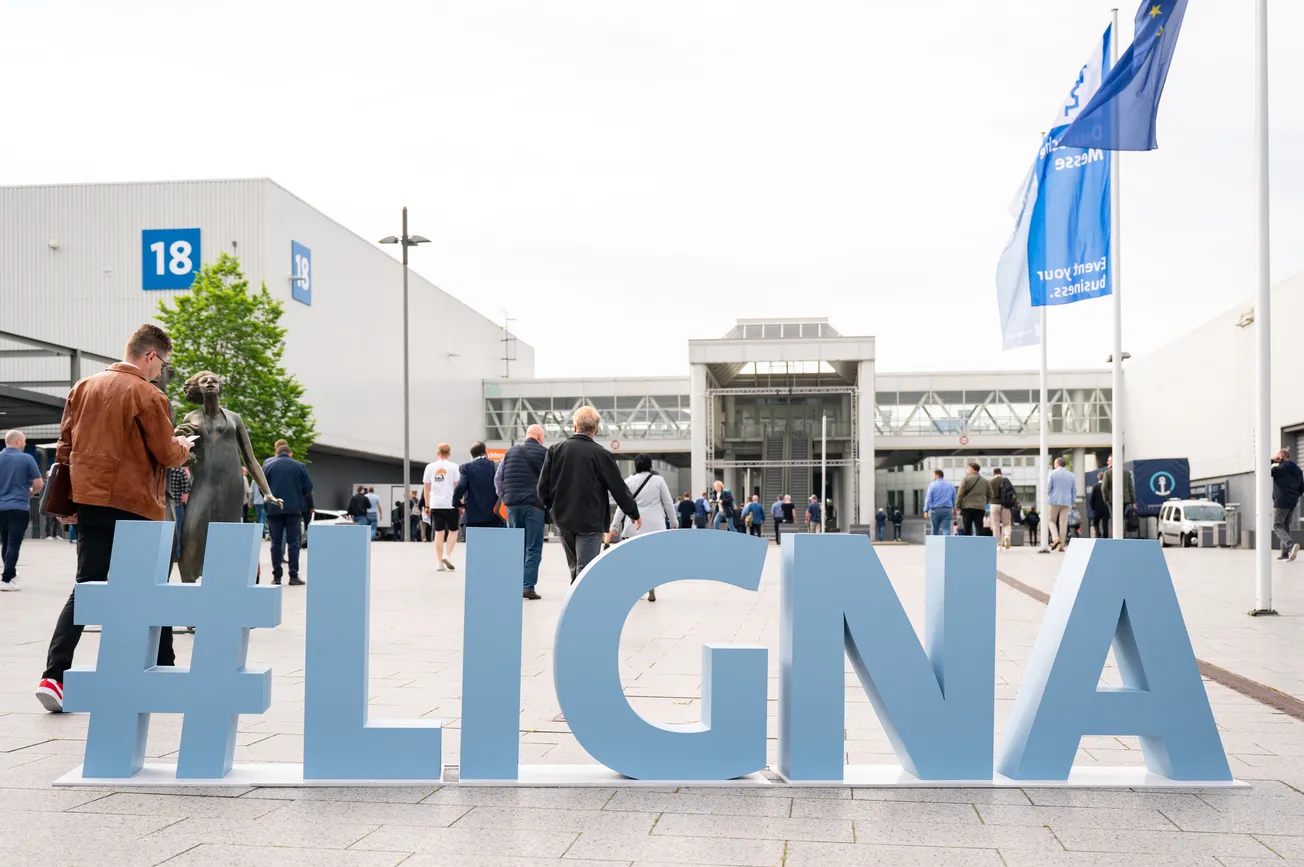Table of Contents
Lightweight to the core
17 years after the first patent, Neucor is producing a hollow core MDF product that combines light weight with superior strength
By Rich Christianson
Mighty light yet mighty strong: That’s the value proposition Neucor brings to market as it revs up production of corrugated MDF cores at its facility in White Swan, Wash., purchased from Jeld-Wen in November 2014.
The molded 3D cores are the framework for Neucor customers to construct lightweight panels tailored to their products. Just lay up a substrate to each side of the core, such as a 3mm sheet of MDF, and edgeband any or all sides as needed. Neucor literature claims the resulting panels have performance characteristics similar to traditional MDF but at about half the weight.
“The concept is simple,” explained John Fujii, founder, chairman and CEO of Neucor. “We’ve used proven engineering designs to produce a lightweight panel that is also strong. It’s basically a wood analog of corrugated paper. In other words, it’s corrugated wood.”
Being less hefty has many advantages. For one, the panels are far less arduous to handle by workers on the shop floor, installers at the job site and consumers in the home. The lighter weight also translates into lower transportation costs. Additional cost savings on shipping are realized because the 3D cores’ uniform furrows and ridges allow them to be neatly stacked up to seven deep for each MDF panel.
In terms of strength, compared to traditional paper honeycomb core panels such as those used in some IKEA furnishings, panels made with Neucor can handle more weight without buckling. This makes them better suited for more expansive weight-bearing horizontal surfaces, including countertops.
Neucor also can play the “green” card because the panels are made with 100 percent recycled wood residuals and bound by MDI, a no-added formaldehyde resin.
Despite these attributes, Fujii said, Neucor will not compete head on with honeycomb or traditional MDF panels. Instead, Fujii said, the product will cater to wood product manufacturers seeking a “strong, lightweight specialty wood composite panel at a moderate price.” Potential uses of Neucor range from countertops and residential furniture to store fixtures and acoustical wall panels.
Product Launch
After clearing the EPA permit process without a hitch, the first batches of Neucor, dubbed “test samples” by Fujii, shipped at the start of May. The first customers included those who examined samples of Neucor displayed at the last two NeoCons and at GlobalShop this spring. Others received a Neucor sample in the “box of innovation” shipped to 100 Material ConneXion members. Neucor was named one of Material ConneXion’s top 15 products recently added to its material library. 
“Our initial volume will not be large, but it will be critical,” he said. “Our first customers essentially are buying our product to see how it works. A lot of improvements and innovations will come from what they tell us.”
Neucor’s launch comes 17 years after the first of 14 U.S. and foreign patents were issued. While the fundamental concept for Neucor described in the original patent is the same, the technical process for making the product captured in newer patents is significantly different.
“The original 1999 patent was based on a wet-formed fiber process which has been superseded by dry-forming in practically every major wood products sector except for paper making,” Fujii said. “It was less efficient energy-wise and has greater pollution potential than the dry-process Neucor method. Also, we can produce a precise and flexible range of Neucor products that is not matched by wet processes.”
Research and development of Neucor was aided by a pair of Small Business Innovation Research grants totaling $366,000 awarded by the U.S. Department of Agriculture in 2002 and 2003. Those early R&D efforts led to process improvements using the dry-formed TrussCore process.
Fujii called Neucor manufacturing a “straight-forward process.” Preparation of the wood fiber obtained from local sawmill and veneer operations is similar to the filtering and drying methods used to make MDF panels. The processed fibers are placed in a rigid mold and subjected to heat and pressure to form a 3-D truss.
Production of 97-inch-by-49-inch Neucor products is initially being limited to two core thicknesses: 0.514 inch for making ¾-inch panels and 0.889 inch for making 1 1/8-inch panels. Ultimately, Fujii said, the plant will offer everything from core thicknesses to make a “compressed” ½-inch MDF panel to 3 inches or more.
“Our ability to offer customers a lightweight core to make a 7/8 inch panel or one that is 3 1/2 inches is what will make us very competitive in the specialty panel market,” Fujii said.
Fickle Finger of Fate
“It really wasn’t my plan to buy the Jeld-Wen plant,” said Fujii, a retired technical director of the paper industry.
In 2008, he approached Jeld-Wen with the opportunity to “toll manufacture” Neucor panels at the MDF door skin plant located in the heart of the Yakama Nation.
Then the Great Recession reared its ugly head, prompting Jeld-Wen to shut down the White Swan plant in 2009. By 2011, after Jeld-Wen had opened a much larger capacity door skin plant in Winn Parrish, La., the moth-balled plant became expendable. Jeld-Wen asked Fujii if he would like to buy it. Three years later, Fujii took ownership of the 174,000-square-foot plant, 114 acres of land and all of the equipment for $2.86 million. Included were a pair of Washington Iron Works short cycle presses modified to press Neucor products.
Shifting the plant from making MDF door skins to Neucor was made all the easier because Fujii was able to assemble a team of experienced professionals, including many with backgrounds in wood composite manufacturing and one with 15 years working for Jeld-Wen at the White Swan facility. In addition, Evergreen Engineering, an industrial consulting company based in Eugene, Ore., helped expand and modernize the plant to produce up to 140 million square feet of the lightweight 3D cores per year.
Fujii said he intends for the plant to create at least 200 jobs and still be going strong 30 years or more down the road, shipping Neucor products for a wide range of end users, some of which he admitted he can’t even imagine.
“I believe that the wood products industry is in need of a renaissance,” Fujii said. “You have all of the major producers of wood products struggling to make a go of it. The industry in North America is contracting at the very time it should be growing.
“I’m committed to help build what I would call an advanced wood products industry built for the future and that is good for the environment, efficient in the use of resources and energy and that will create jobs.”










